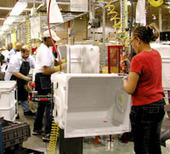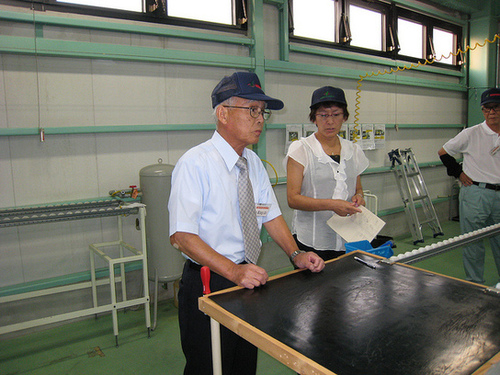Nov 27 2011
Assembly Mag’s John Sprovieri responds to Kevin Meyer about Lean at Whirlpool
Via Scoop.it – lean manufacturing
John Sprovieri’s article opens with the following :
“Austin Weber’s article on lean manufacturing at Whirlpool was part of a series of articles written to celebrate the 100th anniversary of the company. As such, it was not the appropriate venue to dwell on the negative aspects of the company’s history, but rather to celebrate the accomplishments of one of this country’s great manufacturers.”
I could see “celebrating accomplishments” as a role for the company’s Public Relations department in an ad page. But is a reporter supposed to be a cheer leader for the companies he covers?
Via www.assemblymag.com




Nov 29 2011
More about Kanbans, and What it Takes to Use Them.
Ever since the world outside of Toyota started noticing its production system in the late 1970s, the Kanban system has received a disproportionate amount of attention compared to other features. It does not mean, however, that it has been accurately implemented in many of the factories that claim to have done it. To anyone who cared to study it, details have been available in English at least since Robert Hall’s Zero Inventories (1983), the JMA’s Kanban, Just-In-Time at Toyota (1985), Yasuhiro Monden’s Toyota Production System (1993), or an updated treatment in Lean Logistics (2005).
Pressured to implement Kanbans by executives to whom it was little more than a buzzword, many manufacturing professionals found it more expedient to take old, familiar approaches like the two-bin system or reorder-point and call them Kanban. One such system implementing reorder-point through cards placed on a board has become so popular in France that I suggested calling it “French Kanban.” As can be seen in Figure 1, each column on the board is a mirror of the inventory level for an item. Each pocket filled by a card corresponds to an empty slot in stores, so that the remaining amount is visually indicated by the empty pockets on top. The reorder point is crossed when the cards reach the red zone.
Meanwhile, a few academics like J.T. Black at Auburn University or Robert Hall at Indiana University took the trouble to thoroughly investigate the Toyota system as a whole and the Kanban system in particular, but most of their colleagues didn’t, preferring a simplistic rendition of the Kanban system that made their own ideas stand out by contrast. In this context, insisting on the genuine Kanban system is perceived as nitpicking, because the differences are not in the big idea but in the details. You can easily dismiss these details as insignificant until you consider their cumulative effect on thousands of shop floor transactions every day.
Here are two examples, found today in a blog post:
When evaluating or learning a tool like the Kanban system, you have to consider the following:
Within its range of applicability, the Kanban system is both simple enough for people to apply and sophisticated enough to get the job done. This is a tall order, and we should not underestimate what it takes.
Even in Japanese, the word Kanban has many different meanings, the most common being a sign advertising a store on the street, as you can see by searching Google images for “看板” (Kanban). Figure 2 shows, on a sidewalk, the Kanban of a beauty salon located on the 2nd floor of the building.
Share this:
Like this:
By Michel Baudin • Technology 3 • Tags: Kanban, Lean manufacturing, Toyota